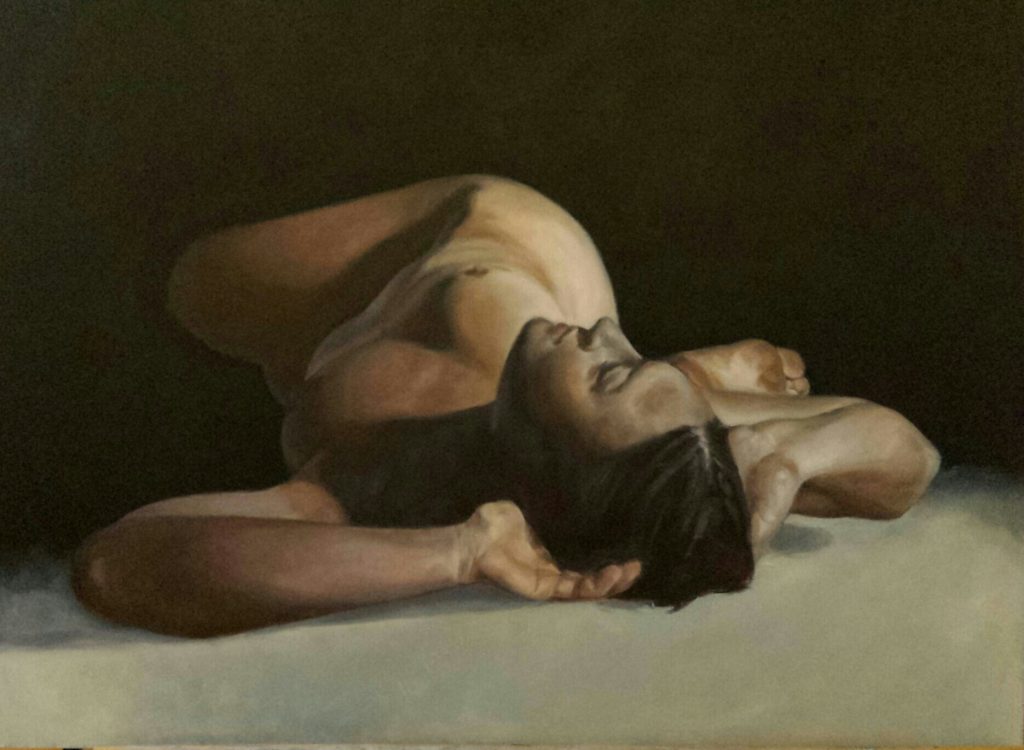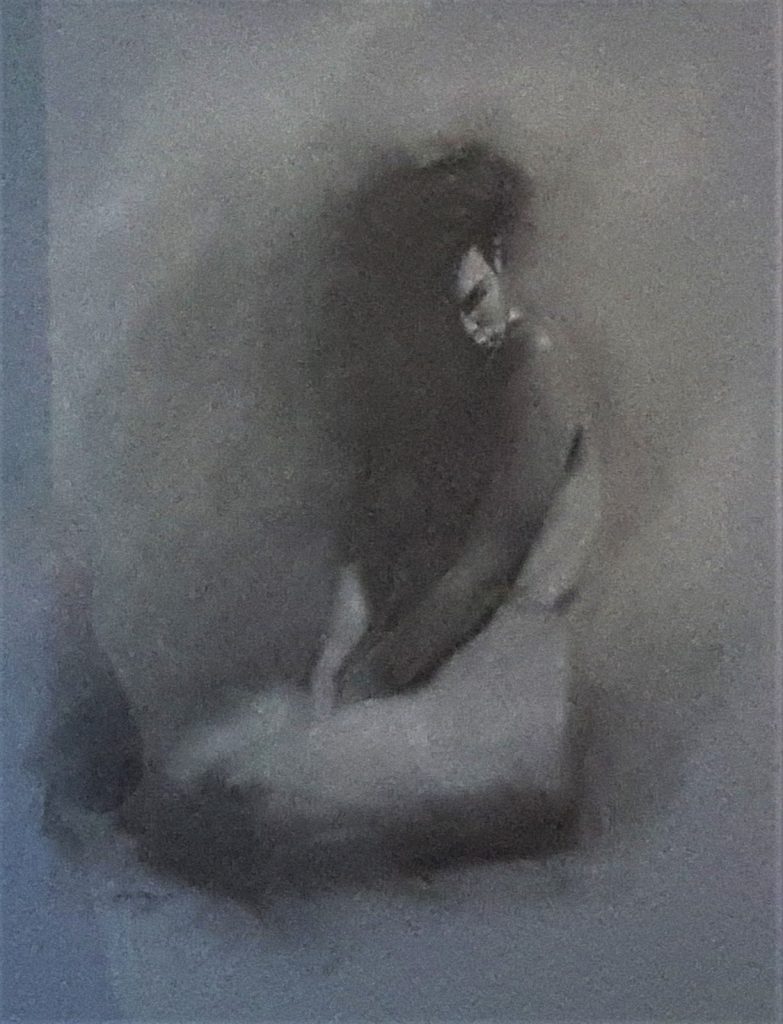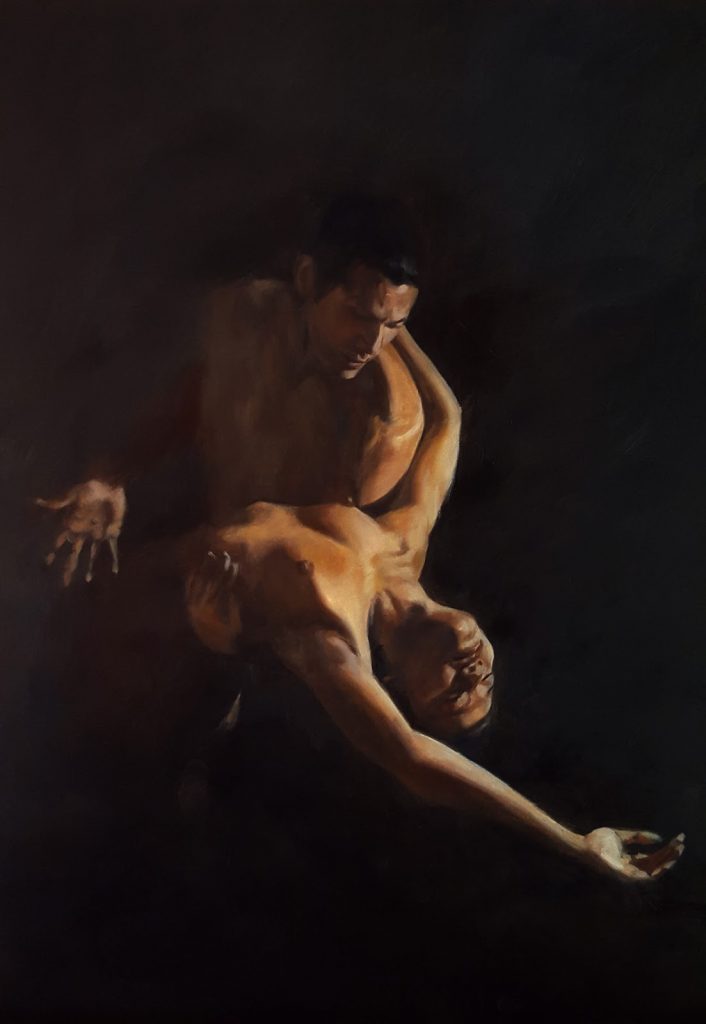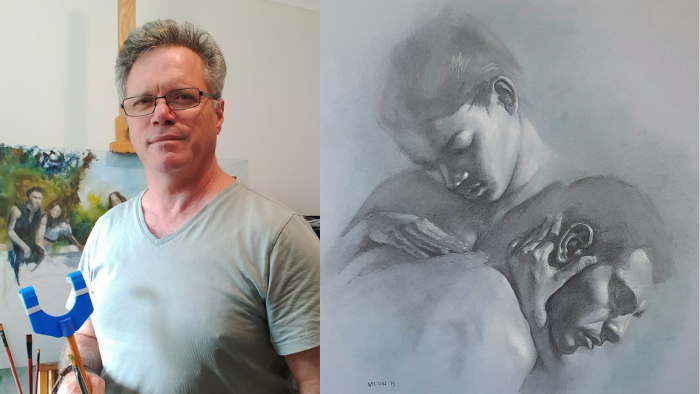“The human figure is at the core of expression, and the energy and variations that the human form is capable of have always intrigued me”
Fred Whitson is a talented self-taught artist located in Mornington Peninsula, in Australia. Ever since he was a little boy he enjoyed painting and drawing, but later pursuit a professional career in Music. In 2013 Whitson decided to draw and paint again, and has been creating beautiful paintings ever since.
Whitson has been inspired by contemporary artists like David Jon Kassan, Christopher Pugliese, and Steve Hanks. He focuses on the human form, applying different styles and techniques, but when it comes to painting he prefers oils. Fred has over 30 years of teaching experience and decided to teach beginner and intermediate artists to encourage them to pursue their artistic goals.

In this Q&A, artist Fred Whitson shares with PoseSpace how he decided to become a painter, how he uses PoseSpace during his trips, how he constantly encourages his students and more:
Can you tell us about your background and how you got into art?
I haven’t had any formal training as such, just lots of practice and asking questions of experienced, extremely capable artists. In my upbringing, my parents always exposed to the Arts, in music, theatre and visual arts, so I was attracted to drawing at an early age. I had a long hiatus from art for about 20-25 years with life as a parent myself and some changes of career. I was lucky enough to go to a workshop in 2013 and that transformed things for me, and I’ve been in the creative world since, and loving it!
What are your favorite mediums and why?
I love oils – so much fun! I’ve also made peace with watercolors, and had a lot of fun exploring those. When I draw, I usually use Generals charcoal pencils and PanPastels.

How do you start a work — do you have any rituals?
Squinting helps identify major players of shape and tone. For more advanced and complex works, I’ll work out the work surface dimensions and run the composition through a composition armature, to check placement of key focal points and rhythmic aspects.
You work while you travel. Do you use PoseSpace’s photos? Can you tell us about this experience?
When I travel, I always take a sketch book with me, as I love to draw some of the scenic architecture, and visit museums and galleries to sketch from paintings, drawings and sculpture. Europe is perfect for this. I’ve taken my trusty tablet which is full of my PoseSpace collection, and long train trips are ideal opportunities to get the tablet out, call up a PoseSpace image, and spend time sketching studies of hands, expressions etc from the hi-res images. I did some great studies of hands from a PoseSpace model image library on my way to Nice from Avignon! PoseSpace provides incredibly valuable references for artists at any stage of their artistic journey.

Why figurative art?
The human figure is at the core of expression, and the energy and variations that the human form is capable of have always intrigued me. Raw emotions shown this way are simply beautiful and awe inspiring. The same pose from different angles or different lighting can convey a whole new meaning. How much fun is that?!
What advice do you constantly give to your art students?
I always encourage them to aim for precision and control – you’re never going to improve your skills unless you demand more from them. Classical discipline has stood the test of time for that reason, why it’s produced so many Masters. Being a musician, I know what’s needed to improve with a piece of music, and it’s the same with art. Having said that, there needs to be within you a desire to become better, and that challenge makes the entire process fun, despite little temporary frustrations and setbacks. Take your time, focus on basics, and enjoy the process! Reward yourself for your successes, and realize that not every piece you produce will be a masterpiece, but should be able to learn something from it.

Tell us one thing you thought you knew, that it later turned out you were wrong about.
Ooo, good question! I think I can answer that best when I look through my old sketch books, when my sense of proportion, angles, shapes etc wasn’t as keenly developed (and it still has some way to go). I thought my skills and knowledge back then were good, but with years more of practice, combined with hindsight, I can look back and recognize that I was wrong. That realization helps keep me grounded now, knowing that I will always have room to improve! Anyone who thinks they are already at the top of their game and has no room for improvement, might as well pack their brushes away.
Do you have any shows or activities on the horizon that you’d like to tell our readers about?
COVID has thrown a lot of plans in the air, so I’ll have to keep an eye out for opportunities as they pop up. In the meantime, I have an artist tool that I’ve developed that I’m marketing, and helping locked-down artists keep their sanity that way. I post regularly on social media too.
Fred Whiston’s website: https://www.fredwhitsonfineart.com
Instagram: https://www.instagram.com/fredwhitson/

